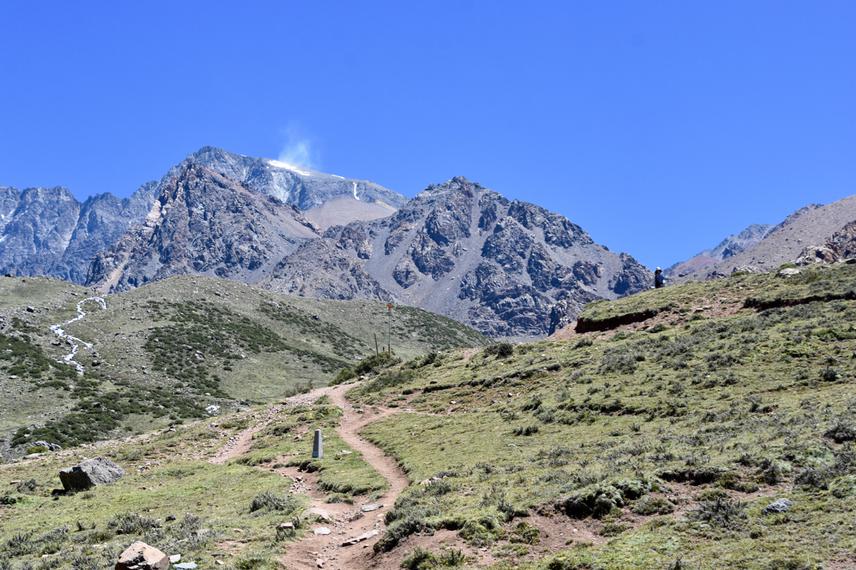Ana Clara Mazzolari
Mountains provide valuable ecosystem services and are considered as important biodiversity refuges. Biological invasions and tourism are two of the main human disturbances, and they can interact increasing risks to mountain biodiversity. In this project we aim to: 1) Increase the knowledge about the effects of touristic activities and its associated infrastructure, such as trails, on exotic plant distribution and abundance; 2) Identify exotic species’ functional strategies to develop predictions about their potential invasion in these mountain ecosystems; 3) Develop management strategies that include stakeholders’ knowledge and attitudes about exotic plant species and their management.

touristic trail in Cordón del Plata Provincial Park, Mendoza, Argentina. ©Jonas Lembrechts.
Mountains provide valuable ecosystem services for human settlements, playing a critical role in water cycles, and being important centers of biological diversity. They are also popular for tourism with over two million visits per year globally. Although tourism provides important cultural ecosystem services, it can also threaten biodiversity conservation by promoting the establishment of Invasive Exotic Species (IES). Tourism infrastructure, like roads and trails, can act as important vectors for exotics dispersal and favor invasions through physical disturbance.
This, together with increases in temperature from climate change, which may expand the elevation range of IES, highlights the importance of assessing its status.
In particular, assessing trail effects on IES becomes very relevant because they are the most common type of infrastructure in parks and reach high elevations, posing a major threat for alpine ecosystems not previously threatened.
This project will contribute to the knowledge about plant invasions in mountain ecosystems guiding natural resource and tourism management in the Central Andes of Mendoza, Argentina.
This research will integrate the influence of human disturbance, specifically trails, exotic species’ functional strategies and different stakeholders’ social perception about biological invasions in mountain-protected areas.
The main contributions of this project will be:
1. Increasing the knowledge about the effects of touristic activities and its associated infrastructure, such as trails, on exotic plant distribution and abundance along elevation gradients.
2. Identifying exotic species’ functional strategies in order to develop predictions about their potential invasion in these mountain ecosystems.
3. Developing management strategies that include stakeholders’ knowledge and attitudes about exotic plant species and their management in landscapes of high conservation value.
4. Providing national and international conservation agencies grounded-theory and tools to more effectively manage and minimize IES impacts.
This project will form part of the MIREN International Network’s current research-scheme, hence gaining critical inputs from an already successful collaboration partnership (http://www.mountaininvasions.org/). This collaborative network has outstanding research experience and copious publications in the field of invasion biology, and biogeography and conservation of plants along environmental gradients, particularly in mountains. The MIREN Network has different research nodes around the world including the Central Andes in Mendoza.